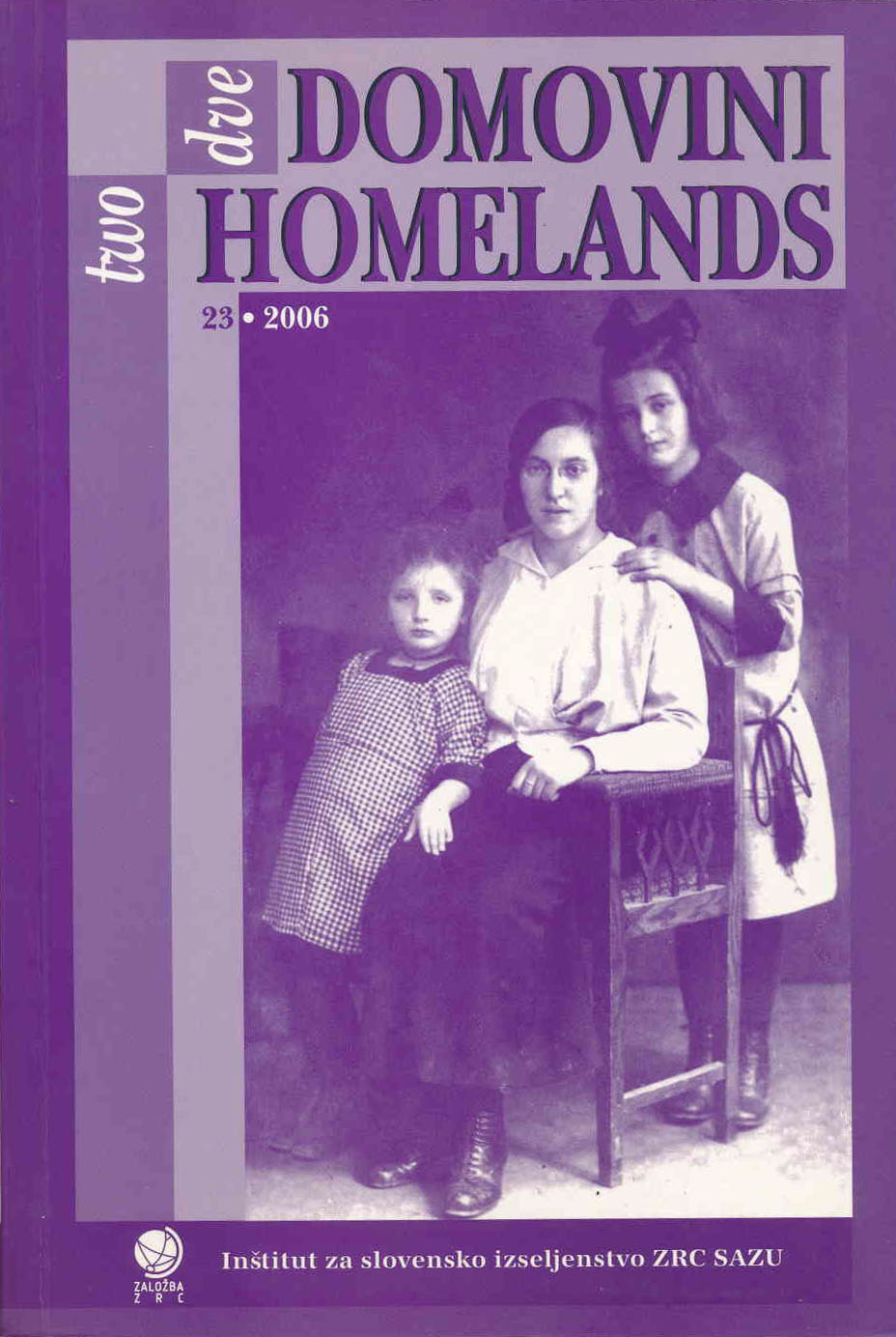THE PATHS OF PACKAGES IN MIGRANTS CORRESPONDENCE ACROSS THE ATLANTIC 1940-1960: »... 2 BARS OF SOAP, 6 PACKETS OF SOUP, AND THOSE BANDAGES FOR SMALL WOUNDS...«
Keywords:
Migrants correspondence, oral history, discursive approach, subjective reality of the circumstances and relationshipsAbstract
The correspondence of the family Udovič-Valenčič-Hrvatin span over many decades among mother Helena and her youngest son Ivan in Jelšane (Slovenia) and her other three children who emigrated to Americas. Her son Josip left for Cleveland in 1923 and her daughter Pepica joined him in 1930. Her oldest son Anton left for Buenos Aires (Argentina) in 1926. In the text, I presented the correspondence from the period between 1940, when mother Helena died and 1960, when Pepica came to Jelšane for a visit for the first and last time. This period is interesting because the correspondence did not include only letters but mainly the packages. The desperately needed help in food, clothes and other neccessities was sent to Jelšane regularly by two brothers and a sister. The letters in this period are full of lists of items, which were sent to the relatives in Jelšane and the heartbreaking questions if they got the packages.. In the text, the reasons for poverty and misery are mentioned only briefly: the devastation was brought to Jelšane by two world wars, a quarter of a century of the fascist Italian regime, communist experiments with the agrarian reform and industrialization, the poor conditions for cultivating the land and the loss of Trst/Trieste, which was traditionally the main city where products were sold by Jelšane families. To present the emotions of those who left and those who stayed even better, I combined the family correspondence with the life narratives. They offer important material for the research of “a tight network of exchanges of support” in which the bare neccessities in the packages conveyed the unvisible expressions of solidarity, caring and love. In this way, the subjective reality of the migrants’ relationships could be seen in its complexity and controversy.
Downloads
Downloads
Published
How to Cite
Issue
Section
License

This work is licensed under a Creative Commons Attribution-NonCommercial-NoDerivatives 4.0 International License.
Authors guarantee that the work is their own original creation and does not infringe any statutory or common-law copyright or any proprietary right of any third party. In case of claims by third parties, authors commit their self to defend the interests of the publisher, and shall cover any potential costs.
More in: Submission chapter





